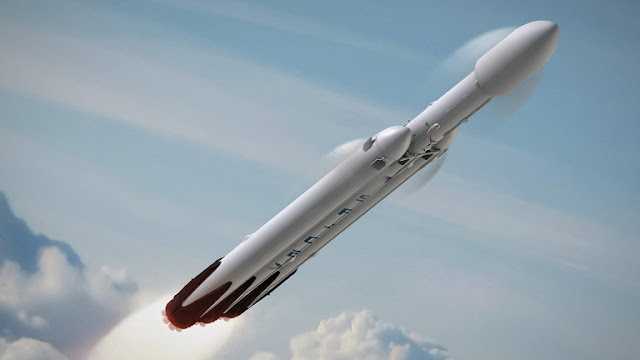SpaceX Plans to Send 2 Tourists Around the Moon in 2018
SpaceX, the ambitious rocket company headed by Elon Musk, wants to send a couple of tourists around the moon and back to Earth before the end of next year. If they manage that feat, the passengers would be the first humans to venture that far into space in more than 40 years.
Mr. Musk made the announcement on Monday in a telephone news conference. He said two private individuals approached the company to see if SpaceX would be willing to send them on a weeklong cruise, which would fly past the surface of the moon — but not land — and continue outward before gravity turned the spacecraft around and brought it back to Earth for a landing.
“This would do a long loop around the moon,” Mr. Musk said. The company is aiming to launch this moon mission in late 2018.
The two people would spend about a week inside one of SpaceX’s Dragon 2 capsules, launched on SpaceX’s Falcon Heavy rocket. The spacecraft would be automated, but the travelers would undergo training for emergencies.
Mr. Musk did not say how much the travelers would pay for the ride. “A little bit more than the cost of a crewed mission to the space station would be,” he said.
The Falcon Heavy itself has a list price of $90 million.
While the trip appears to be within the technical capabilities of SpaceX, industry observers wondered whether the company could pull it off as quickly as Mr. Musk indicated. “Dates are not SpaceX’s strong suit,” said Mary Lynne Dittmar, executive director of the Coalition for Deep Space Exploration. The Dragon 2 and Falcon Heavy are years behind schedule and have yet to fly.
“It strikes me as risky,” Dr. Dittmar said, adding that autonomous systems are not infallible. “I find it extraordinary that these sorts of announcements are being made when SpaceX has yet to get crew from the ground to low-Earth orbit.”
Last week, a crewless Dragon capsule taking cargo to the International Space Station aborted its rendezvous because of a glitch. It successfully arrived a day later.
Mr. Musk said the two would-be private space travelers wished to remain anonymous for now. He declined to describe them, except to say they knew each other.
Seven space tourists have paid tens of millions of dollars to fly on Russian Soyuz rockets to visit the International Space Station, which is about 200 miles above the Earth’s surface. This would be a much more distant trip. The moon is about a quarter million miles away, and the trajectory would take the capsule 300,000 to 400,000 miles from Earth.
No astronauts have ventured beyond low-Earth orbit since the last of NASA’s Apollo moon landings in 1972. NASA is working on a rocket, the Space Launch System, and a capsule, Orion, that would be capable of taking astronauts to deep space once again.
But that first launch, without anyone on board, is scheduled for late next year, taking a path similar to what Mr. Musk has proposed for his space tourists.
This month, NASA announced it is looking at the possibility of putting astronauts on the first flight, but officials say that would probably delay the launch to 2019.
The rocket that SpaceX would use for the voyage is more powerful than its current Falcon 9 workhorse, but not as large as NASA’s.
When Mr. Musk announced the Falcon Heavy in 2011, he said it would fly in 2013. The maiden flight is now scheduled for this summer.
SpaceX has a contract to take NASA astronauts to the International Space Station using the Dragon 2 capsule launched on the Falcon 9 rocket. That program has also encountered delays.
SpaceX is scheduled to launch a crewless test flight this year and take its few NASA passengers next spring, although a report by the Government Accountability Office has cast doubt that SpaceX would be able to do it that quickly.
NASA has financed much of SpaceX’s spacecraft development, and Mr. Musk said the agency has priority. If NASA wants to put its astronauts on the Falcon Heavy’s first moon flight, he said, SpaceX will comply. But the Falcon Heavy has not been through NASA’s rigorous reviews to be judged safe for astronauts.
NYT



Comments
Post a Comment